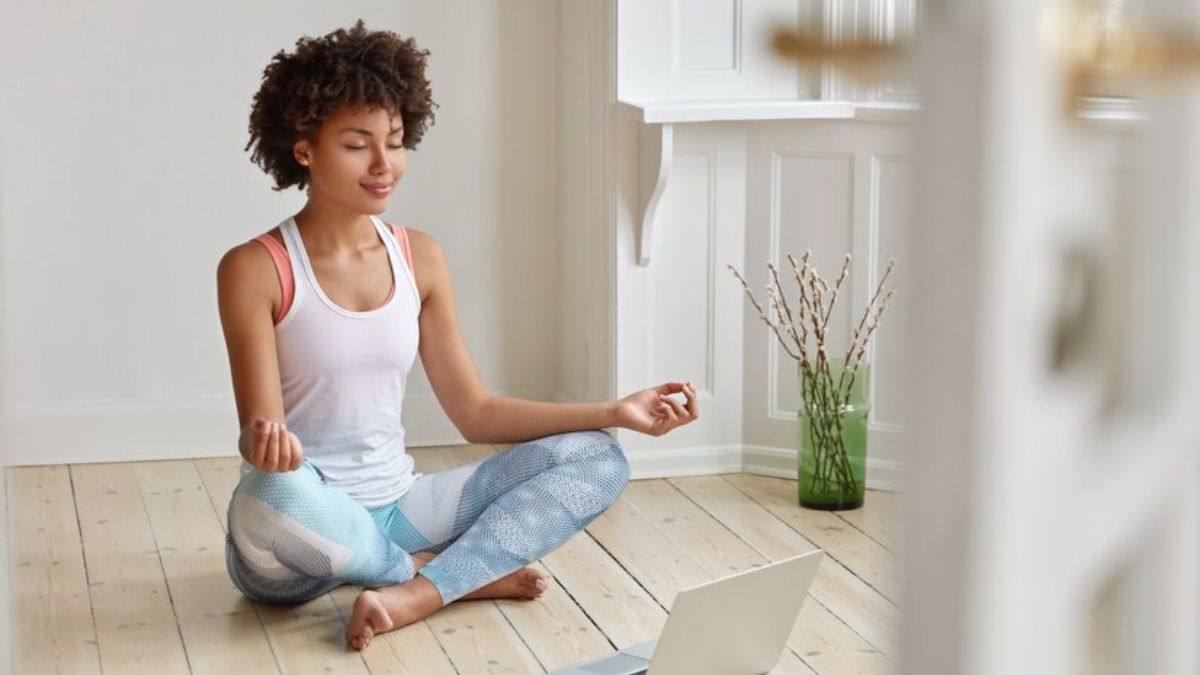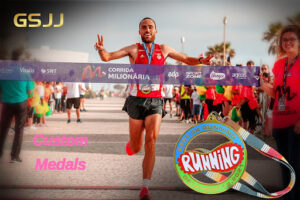HEALTH
Unveiling the Mystery of Pikruos: A Comprehensive Guide

Welcome to the enigmatic world of Pikruos, where ancient wisdom meets modern mindfulness. Have you ever wondered about the secrets that lie beyond the surface of reality? If so, then Pikruos might just be the key to unlocking those mysteries. Join us on a journey as we delve deep into the origins, core concepts, benefits, and challenges of Pikruos. Get ready to uncover a practice that transcends time and space – are you prepared to unravel the mystery?
The History and Origins of Pikruos
Let’s delve into the intriguing history and origins of Pikruos, an ancient practice shrouded in mystery and wisdom.
Pikruos traces its roots back to centuries-old traditions passed down through generations, originating from mystical teachings that blend spirituality with practicality.
The exact beginnings of Pikruos remain elusive, wrapped in folklore and oral histories that speak of wise sages who mastered the art of harmonizing mind, body, and spirit.
Through the ages, Pikruos has evolved to adapt to changing times while preserving its core essence of self-discovery and inner transformation.
As practitioners explore the depths of Pikruos, they uncover a tapestry woven with threads of resilience, mindfulness, and interconnectedness – guiding them on a journey towards enlightenment.
By understanding the historical context behind Pikruos, we gain insight into its profound significance as a holistic approach to living authentically and purposefully.
Understanding the Core Concepts of Pikruos
Welcome to the intriguing realm of Pikruos, where ancient wisdom meets modern understanding. At its core, Pikruos revolves around the interconnectedness of mind, body, and spirit – a holistic approach to self-discovery and growth.
Central to Pikruos is the concept of energy flow within the body. By tapping into these subtle energies through meditation and movement practices, practitioners aim to achieve balance and alignment on all levels.
Another fundamental principle in Pikruos is the idea of mindfulness – being fully present in each moment without judgment or attachment. This practice cultivates awareness and helps individuals navigate life with clarity and purpose.
Furthermore, understanding one’s inner nature and unique strengths plays a vital role in Pikruos. By embracing individuality and honoring personal truths, practitioners can harness their full potential for personal transformation.
Delve deeper into the essence of Pikruos as we unravel more mysteries awaiting your exploration!
The Benefits and Challenges of Practicing Pikruos
Embarking on a journey of practicing Pikruos comes with its own set of benefits and challenges. One of the key advantages is the profound sense of self-awareness it can bring. By delving into the depths of Pikruos, individuals often uncover hidden aspects of themselves, leading to personal growth and introspection.
Moreover, practicing Pikruos can enhance mindfulness and presence in daily life. The focus required during Pikruos exercises helps individuals cultivate a deeper connection with their surroundings, fostering a greater appreciation for the present moment.
However, like any spiritual practice, there are also challenges to be faced when diving into Pikruos. Staying committed to regular practice amidst the hustle and bustle of modern life can be daunting. Finding time for reflection and meditation may require dedication and discipline.
Despite these obstacles, many find that the rewards far outweigh the challenges when embracing Pikruos wholeheartedly. It’s a path that offers not just personal enlightenment but also a deeper understanding of one’s place in the universe.
This method relaxes the mind, allows you to focus, and brings a sense of transcendent calm. The benefits are long-lasting, which is why there are many challenges to practicing this method. You can call on your peers to train with you, customize Medals with a motto for yourself as motivation, and use much else to help you practice.

How to Incorporate Pikruos Into Daily Life
Incorporating Pikruos into your daily life can bring a sense of mindfulness and connection to the present moment. Start by setting aside a few minutes each day to practice Pikruos, whether it’s through meditation, breathing exercises, or simply focusing on your surroundings.
Try incorporating Pikruos into activities you already do, such as taking a walk in nature and paying attention to the sights and sounds around you. This can help cultivate a deeper awareness of the world around you and promote inner peace.
Consider starting a journal where you write down your experiences with Pikruos each day. Reflecting on these moments can help reinforce the practice and deepen your understanding of its benefits.
Don’t be too hard on yourself if you find it challenging at first – like any skill, practicing Pikruos takes time and patience. Be gentle with yourself as you navigate this new way of being in the world.
Embrace the opportunity to incorporate Pikruos into different aspects of your daily routine, whether it’s during meals, conversations with loved ones, or quiet moments before bed. By infusing your day-to-day life with mindful awareness, you may discover greater clarity and contentment within yourself.
Common Misconceptions About Pikruos
Ah, Pikruo’s, a practice shrouded in mystery and intrigue. Yet, amidst its enigmatic allure, there exist common misconceptions that cloud our understanding of this ancient art.
One prevalent misconception is that Pikruo’s is solely about fortune-telling or predicting the future. In reality, it encompasses a deeper connection with one’s inner self and spiritual energies.
Another misunderstanding is that only gifted individuals possess the ability to engage in Pikruo’s effectively. Contrary to this belief, anyone can learn and benefit from practicing Pikruo’s with dedication and patience.
Some may view Pikruo’s as mere superstition or hocus-pocus. However, for those who delve into its teachings with an open mind, they uncover profound insights and wisdom that transcend superficial beliefs.
Let us unravel these misconceptions surrounding Pikruo’s and embrace its true essence with curiosity and respect.
Exploring Advanced Techniques and Practices in Pikruos
Delving into the realm of advanced techniques and practices in Pikruo’s opens up a world of profound possibilities. As practitioners progress on their journey, they may encounter intricate rituals and meditative exercises designed to deepen their connection with the essence of Pikruo’s.
These advanced practices often involve subtle energy manipulation, visualization techniques, and heightened states of consciousness. By honing these skills, individuals can tap into the full potential of Pikruo’s for personal growth and spiritual development.
Explorations into advanced levels of Pikruo’s may also lead to encounters with ancient symbols, sacred geometry, or esoteric knowledge that unveil deeper layers of understanding. These revelations can spark profound insights and transformations within those who are ready to receive them.
As one delves further into the mysteries of Pikruo’s, they may find themselves navigating uncharted territories within their own psyche and connecting with universal truths that transcend time and space. Each practice becomes a stepping stone towards greater self-awareness and enlightenment in this mystical journey through the realms of Pikruo’s.
Conclusion: Embracing the Mysteries of Pikruos
Embracing the Mysteries of Pikruos allows you to delve into a world where self-discovery and spiritual growth intertwine. By understanding its history, core concepts, benefits, challenges, and advanced techniques, you can incorporate Pikruos into your daily life with intention and mindfulness.
As you navigate through the complexities of Pikruos, remember to approach it with an open mind and a willingness to explore beyond what is known. Embrace the unknown aspects of this ancient practice as opportunities for personal development and enlightenment.
Incorporating Pikruo’s into your daily routine can lead to profound transformations in various aspects of your life – from mental clarity to emotional balance. By dispelling common misconceptions and diving deep into advanced practices, you can unlock the full potential that Pikruo’s has to offer.
So go forth on this mystical journey armed with knowledge, curiosity, and a sense of wonder. Let the enigmatic allure of Pikruo’s guide you towards a deeper connection with yourself and the universe at large. Embrace every challenge as an opportunity for growth and every discovery as a stepping stone towards spiritual fulfillment.
May the mysteries of Pikruo’s continue to inspire awe in your heart and soul as you walk along this path of self-exploration. Remember: The true essence of Pikruo’s lies not in unraveling all its secrets but in embracing them wholeheartedly as part of your transformative journey towards inner peace and harmony.
HEALTH
Nabota 200 Units – Korean Botulinum with a Natural Finish

Some aesthetic injectables work — but everyone notices. That’s not the goal for most patients. What they want is subtle help, not a frozen stare. That’s why nabota 200 units, a Korean-made botulinum product, is quietly becoming a favorite among medical professionals. It softens lines where they don’t belong but lets emotion stay on the face.
This isn’t a trend product or a flashy name. Nabota has a very specific purpose: calm down the muscle movement that pulls skin into folds. Crow’s feet, frown lines, and forehead creases are often the result of repeated expression over time. Injecting Nabota into targeted areas helps ease that tension. The muscles still work — just a bit less intensely — and the skin begins to smooth over.
What makes this formula stand out is that it doesn’t wipe away character. The face doesn’t go stiff. It moves. You smile, blink, react — naturally. That’s a major reason why many doctors trust Nabota over older or harsher alternatives.
That’s part of why koreaderma.shop has become a go-to source for clinics looking for the best place to buy korean botox online. The packaging is dependable, the product is trusted, and the outcomes with nabota 200 units speak for themselves.
Inside each Nabota package is a single vial holding nabota 200 units of botulinum toxin, in powder form. It’s not ready to use right away — it needs to be carefully diluted and only then injected. The actual dosage depends on the patient. Some people need a little more, others a little less. That decision is made by the practitioner based on what they see — muscle movement, skin condition, and the client’s preferences.
Usually, the first changes start to appear within a few days. It’s a gradual shift, not a dramatic one. By the second week, many patients feel their skin has relaxed — fewer visible creases, less tension. It’s not about looking different; it’s more about looking rested. And the results tend to last. Most enjoy the effect for five to six months, sometimes longer if their routine stays consistent.
Outside of wrinkle treatment, Nabota also has medical uses. It’s sometimes applied to manage muscle twitching around the eyes or reduce excessive sweating, especially in the hands and underarms. These procedures follow strict clinical guidelines, and they’re definitely not something to try without proper assessment. There are clear cases when the treatment isn’t suitable — like during pregnancy, active illness, or if someone has certain health conditions such as blood clotting issues or immune problems.
Before an appointment, it’s usually a good idea to avoid things that can affect circulation or healing. That might mean skipping alcohol, some medications, or even hot baths. Smoking can also interfere with recovery. These aren’t rules just for show — they genuinely help reduce swelling and improve how the product works.
What people like most about Nabota is that it doesn’t scream “cosmetic procedure.” It blends in. Friends won’t know what changed — they’ll just see you look fresher. And that quiet effectiveness is often what patients want: not a new face, just a lighter version of their own.
For professionals, consistency is everything. With Nabota, results tend to follow a reliable pattern. That matters a lot, especially when you’re treating delicate areas like around the mouth or eyes. You want to know how the product behaves. And when it behaves well — as Nabota does — you keep coming back to it.
HEALTH
What Are the Top 5 Mistakes After Knee Replacement?

Recovering from knee replacement surgery can be life-changing, but many patients unknowingly make errors that delay healing. The top 5 mistakes after knee replacement are commonly overlooked, yet they significantly affect recovery speed, comfort, and long-term success. Understanding these mistakes and learning how to avoid them can help you regain mobility, reduce pain, and get back to daily activities faster.
Quick Answer
The top 5 mistakes after knee replacement are: skipping physical therapy, avoiding movement, not managing pain properly, neglecting wound care, and pushing too hard too soon. Avoiding these errors ensures faster recovery, improved flexibility, and longer-lasting knee health.
Why Avoiding Mistakes Matters in Knee Replacement Recovery
Knee replacement is one of the most successful orthopedic procedures, with over 90% of patients experiencing major improvements in pain and mobility. However, experts emphasize that postoperative mistakes can compromise results. According to the American Academy of Orthopaedic Surgeons, disciplined rehabilitation and proper lifestyle choices directly impact long-term joint performance.
By avoiding the top 5 mistakes after knee replacement, patients reduce complications like stiffness, infections, or delayed mobility. Small missteps—like neglecting exercises or overexerting—can undo months of surgical effort.
The Top 5 Mistakes After Knee Replacement
1. Skipping or Inconsistently Following Physical Therapy
Physical therapy is the backbone of recovery. Patients often assume rest is enough, but consistent exercise restores strength and flexibility. Orthopedic specialists note that missing therapy sessions can cause scar tissue buildup and stiffness.
Correct approach:
- Attend all scheduled physiotherapy sessions.
- Perform daily home exercises as instructed.
- Track progress with a mobility diary.
2. Avoiding Movement Due to Fear of Pain
A common mistake is staying too still after surgery. While rest is important, complete inactivity can lead to blood clots, muscle weakness, and limited motion. The top 5 mistakes after knee replacement almost always include this error.
Correct approach:
- Walk short distances within days of surgery.
- Use assistive devices (walker, cane) when necessary.
- Gradually increase walking time each week.
3. Poor Pain Management and Medication Misuse
Some patients underuse or overuse pain medication. Ignoring pain leads to limited mobility, while overusing opioids risks dependency. Proper pain control encourages participation in therapy.
Correct approach:
- Follow doctor-prescribed medication schedules.
- Use ice therapy and elevation to reduce swelling.
- Explore non-opioid alternatives when possible.
4. Neglecting Wound Care and Infection Prevention
Post-surgical wounds require careful monitoring. Neglecting hygiene or ignoring redness/swelling risks infection, which may require revision surgery.
Correct approach:
- Keep the incision clean and dry.
- Watch for signs of infection: redness, fever, or drainage.
- Attend all follow-up appointments.
5. Pushing Too Hard, Too Soon
Overexertion is just as harmful as inactivity. Some patients return to sports, heavy lifting, or running prematurely. Surgeons stress that pushing too fast strains the new joint.
Correct approach:
- Follow a gradual return-to-activity plan.
- Consult your surgeon before resuming high-impact exercises.
- Focus on low-impact activities like swimming or cycling first.
Comparison Table: Common Mistakes vs. Correct Practices
| Feature | Common Mistake | Correct Practice | Impact on Recovery | Long-Term Outcome |
|---|---|---|---|---|
| Physical Therapy | Skipping sessions | Attending consistently | Faster flexibility | Stronger knee |
| Movement | Avoiding activity | Gradual walking & stretching | Better circulation | Improved mobility |
| Pain Management | Misusing medication | Following doctor’s guidance | Controlled pain | Reduced risk |
| Wound Care | Neglecting hygiene | Cleaning and monitoring incision | Lower infection risk | Safer recovery |
| Activity Level | Returning too soon to heavy tasks | Gradual reintroduction to activity | Steady progress | Longer joint life |
Additional Recovery Tips Beyond the Top 5 Mistakes
- Nutrition: A protein-rich diet supports muscle healing.
- Hydration: Staying hydrated prevents stiffness and aids circulation.
- Sleep: Quality rest accelerates tissue repair.
- Assistive Devices: Using walkers or crutches properly prevents falls.
Orthopedic surgeon Dr. Robert Marx once said, “The key to successful recovery lies not just in the surgery itself but in what patients do after surgery.”
EXPERT ANSWERS
What is the most common mistake after knee replacement?
The most common mistake is skipping or not following through with physical therapy, which limits mobility and long-term flexibility.
How soon should I walk after knee replacement?
Most surgeons recommend walking the day after surgery, beginning with short distances and gradually increasing over weeks.
Can I damage my knee replacement by overexercising?
Yes. Overexertion can strain the joint, loosen the implant, or cause swelling. Low-impact exercises are safest during recovery.
How long does full recovery take after knee replacement?
Recovery varies, but most patients achieve near-full function within 3–6 months, depending on discipline with therapy and lifestyle choices.
What foods should I avoid after knee replacement?
Limit high-sodium, processed, and sugary foods that cause inflammation and weight gain, as they delay healing.
Expert Advice on Safe Recovery
Medical guidelines emphasize balance: stay active without overstraining. According to clinical best practices, recovery is a partnership between patient effort and medical support. By avoiding the top 5 mistakes after knee replacement, patients maximize the benefits of their surgery.
Conclusion:
The top 5 mistakes after knee replacement—skipping therapy, avoiding movement, mismanaging pain, neglecting wound care, and pushing too hard—are all preventable. With careful attention, patients can recover more smoothly, protect their implant, and enjoy long-term freedom from pain. Success depends on consistent physical therapy, proper lifestyle habits, and open communication with healthcare providers.
FAQ’s
What happens if I skip physical therapy after knee replacement?
Skipping therapy delays recovery, increases stiffness, and risks permanent mobility issues.
Is swelling normal after knee replacement surgery?
Yes, moderate swelling is common for weeks, but severe or sudden swelling should be reported to a doctor.
Can I climb stairs after knee replacement?
Yes, with guidance from your physiotherapist. Start slowly and use handrails for support.
How can I sleep comfortably after knee replacement?
Sleep on your back with a pillow under your leg for support. Side sleeping is possible with proper cushioning.
When can I return to driving after knee replacement?
Most patients resume driving within 4–6 weeks, provided they can bend the knee comfortably and stop quickly.
What sports are safe after knee replacement?
Low-impact sports like swimming, golf, and cycling are safe. Avoid high-impact sports such as basketball or running.
HEALTH
Exploring Elderly Living Options and Essential Amenities

As people get older, choosing where to live becomes very important. Today, there are many options for older adults.
Some can live on their own, some need help with daily tasks, and others need full-time care. Each choice has its good points and challenges.
Families need to understand these options to pick the best place for their loved ones.
Understanding Elderly Living Options
As people get older, their needs can change, so it’s important to think about where to live. Options include staying at home, assisted living, or nursing homes. Staying at home helps seniors keep their independence, sometimes with home changes or in-home care.
Assisted living helps with daily tasks and gives chances to socialize. Nursing homes provide full-time medical care. Choosing the right place means looking at the following:
- health needs
- lifestyle
- and money
Knowing the options helps families and seniors make smart choices and enjoy a better life in later years. Thus, you may start to look for community amenities for senior comfort.
Key Amenities to Consider in Elderly Living Communities
Important features for senior living include easy-to-use spaces with ramps, grab bars, and non-slip floors to prevent falls. Access to healthcare, either on-site or nearby, ensures timely medical help. Social and activity areas like lounges, gyms, and programs keep seniors active and connected.
Nutritious meals that can meet special diets support good health. Transportation helps seniors get to appointments and go out safely. Safety features, such as emergency call systems, 24/7 staff, and secure buildings, give peace of mind. Looking at these features helps families choose a place that keeps seniors safe, healthy, and independent.
Evaluating Cost and Financial Assistance
Cost is often an important factor when choosing where older adults live. Prices can be very different depending on the type of community and care needed. Independent living usually costs less than assisted living, and nursing homes are often the most expensive.
There are programs to help with these costs. Medicare, Medicaid, and some veterans’ programs can help those who qualify.
Long-term care insurance may also cover some expenses. It’s a good idea to look at these options early.
The Importance of Community and Support Networks
Another important part of senior living is having community and support. Social interaction helps prevent loneliness, which many older adults face. When choosing a place to live, it’s important to see how it encourages residents to make friends and join activities.
Studies show that seniors with strong social support live longer and enjoy life more. A community that offers group activities and shared spaces can help seniors stay happy and connected.
Navigating the Transition to Elderly Living
Moving to a new living place can be hard for seniors and their families. It’s important to be patient and understanding. Visiting possible communities together can make seniors feel more at ease.
Joining community events can help them make friends and settle in faster. Families should keep talking openly during this change. Sharing worries and expectations can help seniors feel safer and more comfortable in their new home.
Explore Elderly Living Options and Essential Amenities
Picking the right place for seniors to live means thinking about m
any things, like community features, costs, and support from others. Knowing all the options helps you make a smart choice. As you plan this next stage, focus on your loved one’s comfort and happiness, making sure they have the care, resources, and friendships they need to enjoy their later years.

 Cartoon2 months ago
Cartoon2 months agoUnlocking the Potential of Nekopoi.care: A Comprehensive Guide

 Game2 years ago
Game2 years agoExploring Aopickleballthietke.com: Your Ultimate Pickleball Destination

 BUSINESS1 year ago
BUSINESS1 year agoUnraveling the Mystery of 405 Howard Street San Francisco charge on Credit Card

 BUSINESS2 months ago
BUSINESS2 months agoWhat Companies Are In The Consumer Services Field

 HOME IMPROVEMENT2 years ago
HOME IMPROVEMENT2 years agoVtrahe vs. Other Platforms: Which One Reigns Supreme?

 ENTERTAINMENT1 year ago
ENTERTAINMENT1 year agoUnderstanding Bunkr Album: A Comprehensive Guide

 TECHNOLOGY1 year ago
TECHNOLOGY1 year agoThe Guide to Using Anon Vault for Secure Data Storage

 ENTERTAINMENT2 years ago
ENTERTAINMENT2 years agoThe Ultimate Guide to MP3Juices: Free Music Download
















